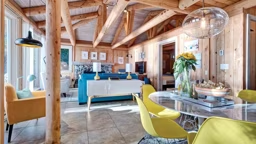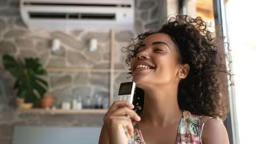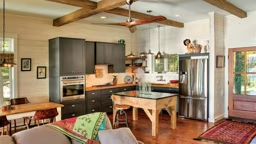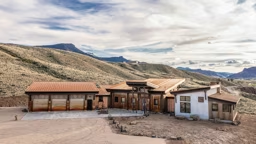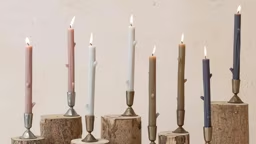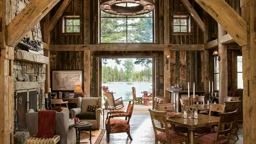Basic parts include a tower, a rotor (blades and hub) and the “balance of system” parts like a generator and battery. The wind blows, blades turn and energy created by the spinning blades is converted to usable power.
Why wind power?
Advantages:
After installation, wind power is free and is one of the cheapest renewable technologies available. Various rebates and incentives curb costs even more. It’s hard to estimate payback, but small turbines can usually pay for themselves in about 15 years. Think of wind power as a long-term investment.
Wind power may be used in conjunction with a local utility company. This way, power is generated when the wind is blowing strongly — at least 10 mph — and when it’s not, electricity comes from the utility. Electricity bills can be reduced by 50 percent or more. If you’re off the grid, hybrid systems (turbines paired with batteries and generator back-up) work well. Deep-cycle batteries can recharge and discharge 80 percent of their power capacity hundreds of times.
Disadvantages:
- Purchasing and installing a turbine is somewhat costly.
- Wind isn’t constant. The wind strength — and the electricity generated — is variable from day to day.
- Some people don’t like how turbines look and sound.
- Environmental impacts include the possible land damage from the use of heavy equipment, which is necessary for installing the turbine, and possible danger to birds that may fly into the sweeping blades or tower. (However, the American Wind Energy Association [AWEA] attributes domestic cats as a bigger threat to birds.)
To consider installing a turbine, you should own at least an acre of land. Open areas are best, but woods can work as long as blade bottoms are 10 to 30 feet higher than anything that is within 300 feet.
For a good installation location, look for tree “flagging,” a good indicator of strong winds. Flagging can vary from slightly bent tree branches to branches being bowed over completely to one side. You can also examine the U.S. Department of Energy’s wind data for your area’s annual average wind speeds.
Research your area’s zoning regulations as they vary in each county. Turbine placement and height may be impacted.
Buying a turbine: The most important things to consider
Expect to pay roughly $3,000 to $5,000 for each kilowatt of “generating capacity.”
Evaluate models primarily by their “swept area,” which is determined by a rotor’s diameter. Bigger blades push or sweep more air, providing more power. However, systems are also rated by their kilowatt generating capacity. According to Steve Wilkey, of Bergey Windpower, cabin owners who use more than the national average of 830 kilowatt hours/month should look for at least a 10-kW system, while those needing only 100-200 kWh/month might do well to invest in a hybrid system comprised of wind and solar.
Also, weight is important, as heavy-duty turbines will generally outlast lightweight models.
Regarding noise, know these facts: Smaller rotors spin faster, creating more noise. Tip speed ratio (TSR) is a ratio between a blade’s tip and wind speed. High TSR rotors are louder. However, a typical residential wind system makes less noise than a washing machine, according to the AWEA.
Writer Jennifer Todd Derrick has two daughters who think wind turbines are really enormous tilt-a-whirls for fairies.




